Handling slurry inevitably exposes equipment to wear. The question is thus how to manage and minimize that wear. North American Mining spoke to four experts about issues in slurry pump wear protection.
By Jonathan Rowland
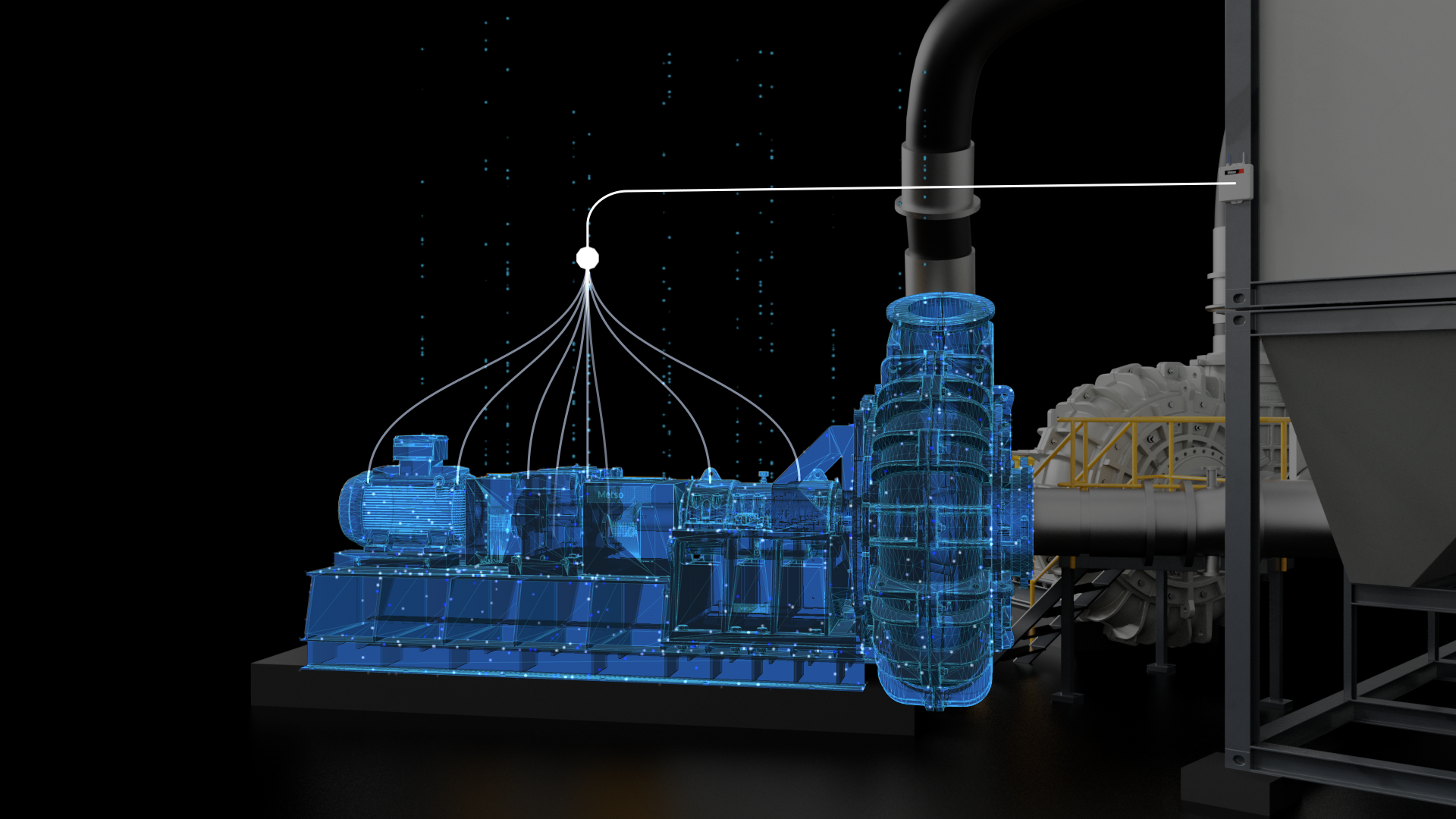
Introduction: the three types of wear
There are three main categories of wear to which a slurry pump may be exposed: abrasion, corrosion and erosion. Abrasion occurs “when particles are forced between two solid surfaces and moved relative to at least one of the surfaces,” explained Quinton Sutherland, divisional senior product manager, Pumps, for Weir Minerals. “Erosion is the wear that results from particles within a slurry flow contacting a solid surface and causing a high contact stress on the surface. Corrosion occurs when components of a slurry cause the wear material to chemically react, which then causes the material to gradually deteriorate. In a slurry pump, abrasion and corrosion often coincide and result in accelerated wear.”
All three mechanisms “wear away the parts, changing their original dimensions and geometry, resulting in degraded performance,” concluded Sutherland.
Abrasion
Abrasion “can come in many different forms, depending on the size and concentration of the solids, as well as the nature of the flow,” Leo Perry, lead product manager – GIW Slurry Pumps for KSB, told NAM.
A common case is caused by “particles between the rotating impeller and stationary suction liner (throatbush),” noted Weir’s Sutherland. Another example may arise “between the shaft sleeve and packing (Figure 1),” added Nicole Bessett, applications engineering manager, KREBS Pumps, Cyclones & Valves, for FLS. “In some cases, the gland follower is too tight, causing the packing to extrude into the sleeve. In other cases, the gland water supply is clogged or has a high concentration of solids. Both scenarios result in ineffective sealing, lower wear life, and more maintenance requirements.”
Another example can “occur between the impeller and the throatbush,” continued Bessett. “As flow recirculates on the suction-side to the low-pressure zone at the impeller eye, mechanical grinding of solids occurs between the throatbush and the impeller.”
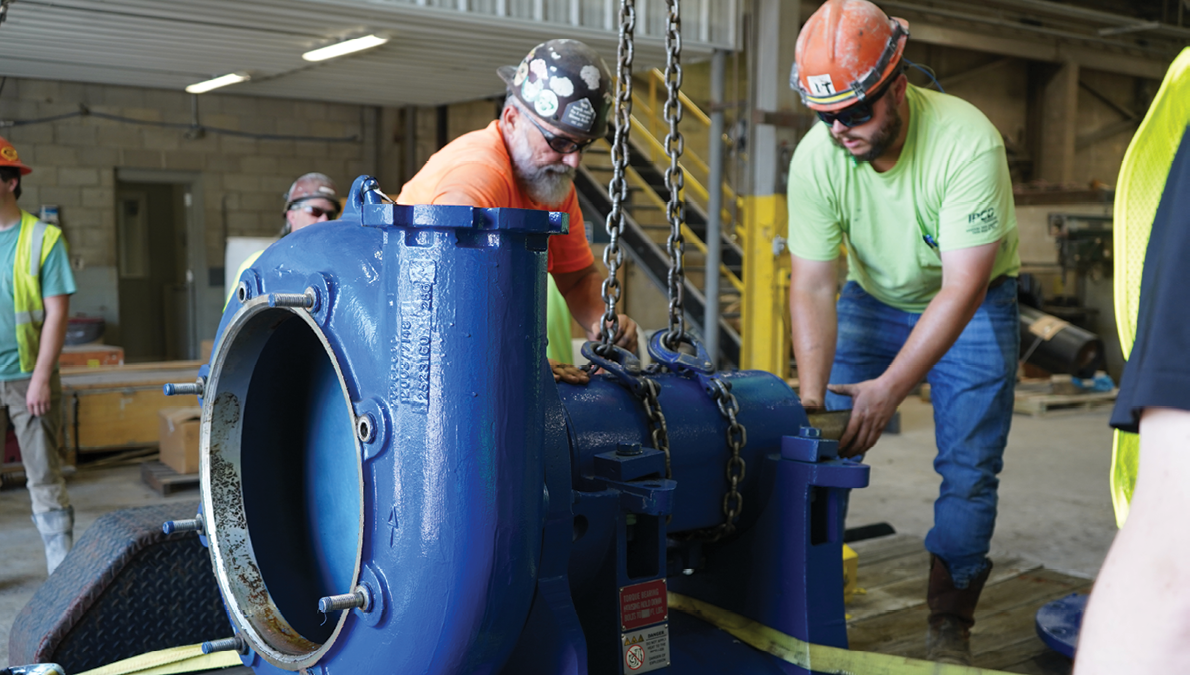
Corrosion
Corrosive wear is a “chemical process that leads to the gradual deterioration of materials,” said Bessett. “One common form is pitting, which refers to localized corrosion that can eventually develop into cavities.” As slurry chemistry can vary widely depending on the application, selecting an appropriate wear material is a key part of managing corrosion.
“When metal liners are required, hypoeutectic chrome alloys offer enhanced resistance against corrosive agents; options such as CD4MCuN and 300 series stainless steels are also available to further meet the specific demands of the application,” added Bessett. “A wide range of elastomer materials can also be provided, which are suitable for various chemical, pH levels, concentrations, and temperatures.”
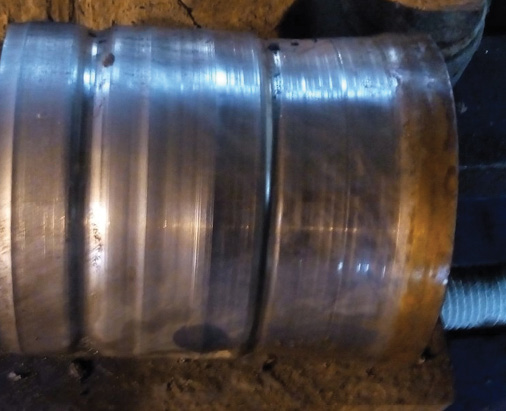
Erosion
Erosion occurs when material is removed through repeated impact of particles. Key factors here include flow velocities, particle characteristics, and pump sizing.
“When suction velocity – the speed at which slurry flows into the suction of the pump – is too high, particles do not have sufficient time to change direction before striking the back shroud of the impeller,” explained Bessett. “The impact becomes more severe as the average particle size increases and the consequence becomes apparent when holes start to form in the back shroud of the impeller (Figure 2). These holes create a low-pressure path, allowing the flow to recirculate which, in turn, reduces pressure and increases wear. This is all indicative of an undersized pump.”
Oversizing “happens when the flow rate is too low for the given pump size, causing the pump to operate to the left of the Best Efficiency Point (BEP),” Bessett continued. “According to Bernoulli’s principle, there is an inverse relationship between pressure and velocity. Therefore, high velocity at the cutwater point of the casing from oversized conditions means there is low pressure. Oversizing can cause reduced efficiency and increased erosive wear at the cutwater point of the casing.”
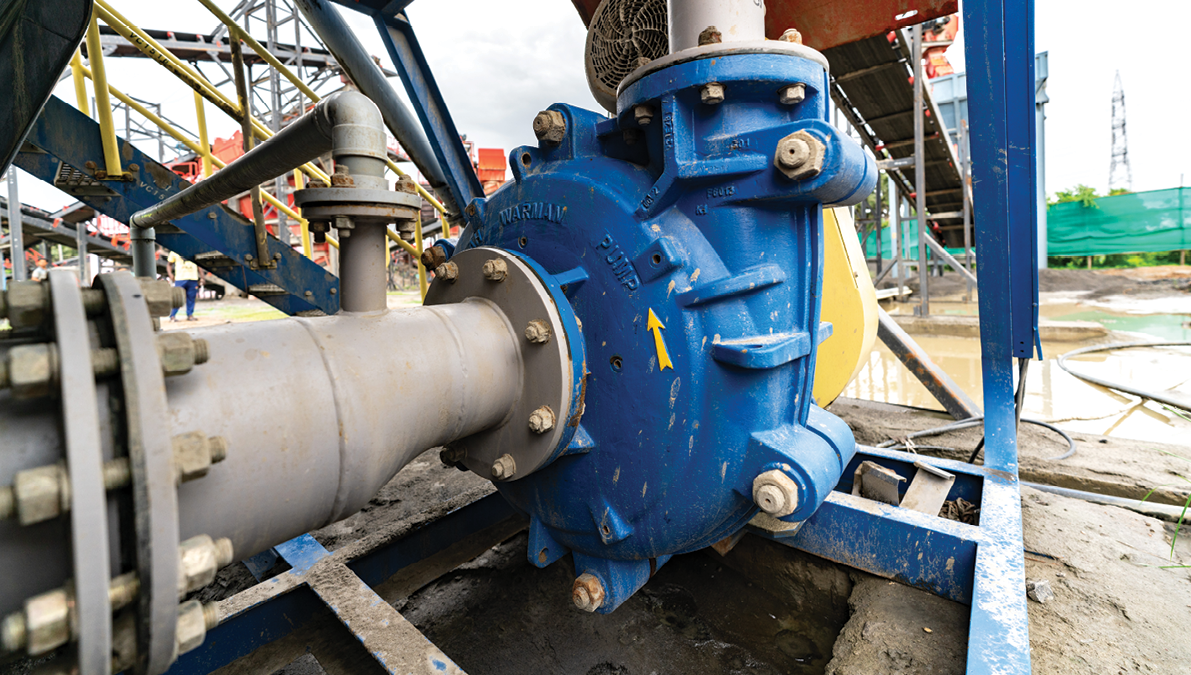
Factors in wear rate
“All hydraulic (wetted) surfaces are subject to wear,” said KSB’s Leo Perry, “but that does not mean all wear is even. There are many factors that determine wear rate.” These can be broadly categorized into pump efficiency, pump maintenance, and pump configuration and material selection.
Pump efficiency. A “less efficient pump can be thought of as a pump that is doing a disproportionate amount of work compared to the useful output (flow and head),” explained Perry. “The design of the pump is an important factor in pump efficiency, but of equal or greater importance is how well the pump matches the system requirements. Therefore, pump selection is critical: in general, the closer a pump operates relative to its BEP Flowrate (BEPQ), the better the wear performance.”
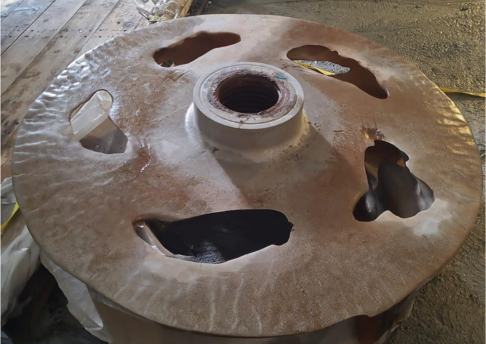
“Operating the pump away from the BEPQ will increase the wear rate,” agreed Tiago Oliveira, vice president, Pumps Services, for Metso, “for example, on the inlet liner, which is subject to sliding bed, crushing and grinding abrasion, and the impeller, which is subject to impact wear mainly in the eye, as well as sliding bed abrasion and low angular impact along the vanes between the impeller shrouds.”
Pump maintenance. Similar to efficiency, “the way a slurry pump is maintained plays a large role in how well it performs, both in terms of output and wear life,” the KSB’s Perry continued. “For example, the operating clearance between the rotating impeller and stationary surface of the casing or throatbush, otherwise known as nose clearance, should be continually maintained and adjusted over the course of the operating life of a slurry pump. This helps reduce harmful recirculation, which can accelerate wear, while maximizing the output and efficiency of the pump.”
Perry also emphasized the importance of nose clearance – the gap between the stationary throatbush and the impeller – to maximizing the operating life. “Slurry pumps are designed in ways that facilitate nose gap adjustment. Many OEMs have introduced ways to perform these adjustments without shutting down the pump. In heavy-duty slurry applications, it may be beneficial to perform these adjustments up to 20 – 25 times over the life of the parts.”
Pump configuration and material selection. Depending on the slurry characteristics, “material selection and pump configuration can also play key roles in the longevity of the equipment,” Perry added. “For example, the size and quantity of impeller vanes and suction diameter may be considered variables in pump configuration that can be optimized based on slurry particle size distribution and observed wear characteristics of the pump. Different materials may have better or worse wear properties in the presence of large particles, or with consistently fine slurries.”
In addition to standard duty conditions, such as head, flow, specific gravity, and percent solids, FLS Pump Applications Engineer Nicole Bessett offered the following factors to consider when it comes to selecting appropriate wear materials:
- Solids concentration, size, mass, hardness: these parameters play a crucial role in determining the behavior of the slurry and its impact on the equipment.
- Slurry properties: consider the chemicals present, pH/ concentration, temperature of the slurry, and the presence of tramp material from process upsets, as these properties can significantly affect the longevity of the pump.
- Solids shape: consider whether the particles have a spherical, angular, or sharp fractured surface. The shape of the particles can influence the wear and tear on the pump parts.
- Contact conditions: evaluate the velocity, angle of impact, and impact occurrence. Understanding these factors allows for pump selection and design able to withstand the expected conditions.
Considering all the above slurry characteristics, “the material properties (the hardness, tensile strength, durometer), then provide insight into the equipment’s ability to withstand wear and operate efficiently,” concluded Bessett.
There is “no one-size-fits-all solution when it comes to wear materials,” agreed Perry. “Wear materials range from the aforementioned steels and elastomers, to cast iron of various compositions and production methods, and ceramics.
“Wear performance is also just one factor to consider when selecting a material; other factors include the cost of procurement, total cost of ownership, ease of maintenance and supply chain considerations. The best course of action is to work with your trusted OEM to analyse the system and unique characteristics of each application and, from there, determine the best solution to meet both operational and budgetary targets.”
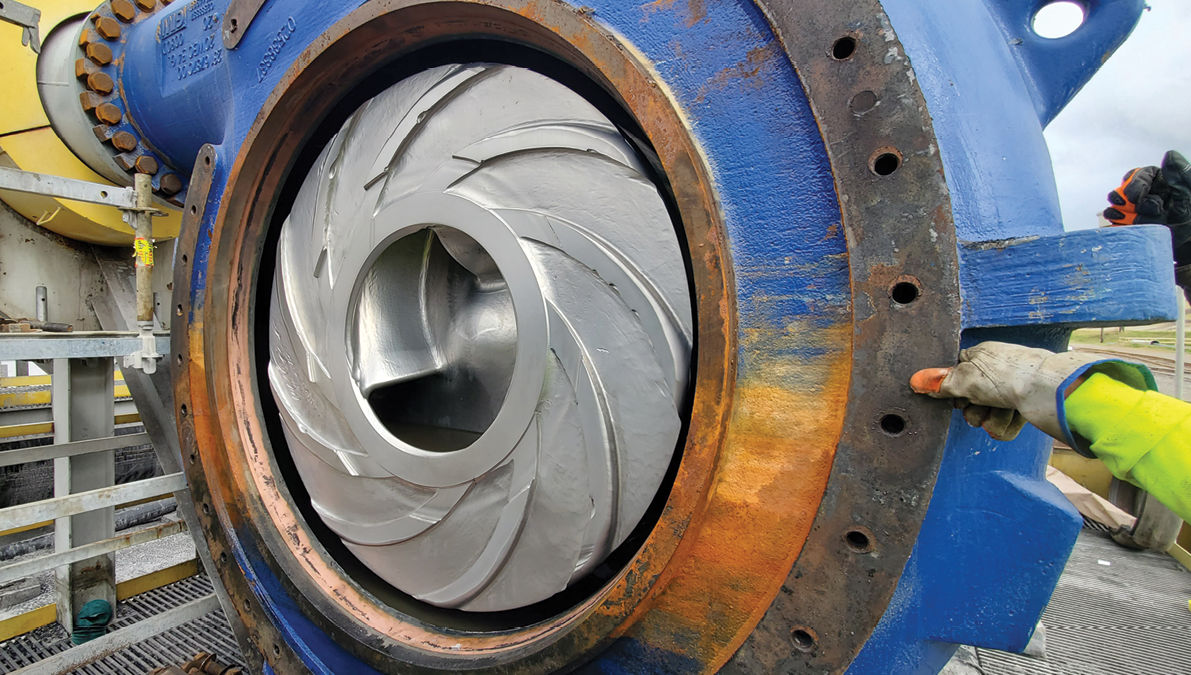
And when premature wear is causing an issue?
As a general rule of thumb, when the pump and system are matched, the casing will last about twice as long as the impeller, and about three times as long as the throatbush. However, “pump design parameters are often adjusted to achieve a desired result, such as 1:1:1 replacements to match planned maintenance intervals,” concluded Perry.
“Typically, the impeller and/or throatbush are the parts that experience the highest wear rates,” agreed Weir Minerals’ Quinton Sutherland. “The impeller is the moving part inside the pump that imparts the energy into the slurry, so it takes the brunt of the wear from redirecting and accelerating the solid and fluid mixture. When the slurry reaches the higher-pressure discharge region of the pump, it tends to seek the lower-pressure suction region of the pump through the gap between the impeller and the throatbush. As a result, the impeller acts like a grinding disc against the throatbush when slurry enters this interface region.”
And when premature or excessive wear is an issue? “The wear patterns may be localized and/or follow certain patterns that can be used in diagnosing the root cause of the premature wear,” replied KSB’s Perry. “Diagnosing the root cause of accelerated wear can lead to sometimes counterintuitive solutions, such as ‘downsizing’ the pump to match lower flowrates, simultaneously improving wear performance on the whole.”
“Whenever I visit site, one area that always piques my interest is the scrap yard,” added FLS’ Nicole Bessett. “It never fails to amaze me the sheer number of worn impellers and throatbushes that end up there. I am always on the lookout for a throatbush that exhibits a Swiss-cheese like appearance or has wear epoxy, often applied to extend the wear life. Additionally, I pay attention to wear patterns that resemble a flowering at the eye of the impeller and question marks on the leading edges of the vanes (Figure 3). These patterns are telltale signs of recirculation and grinding.”
Pump operating practices
It has already been noted that operating the pump away from its BEP can cause wear problems. On the flip side, “good operating practices can also significantly extend the wear life of the pump,” said Metso’s Tiago Oliveira. Best practice advice from our experts included the following:
- Periodically adjust the axial clearance of the impeller to the inlet and back liner to maintain it at a 1-2 mm gap. This helps to avoid turbulence and internal recirculation, which reduce pump efficiency and increase wear.
- Maintain good inlet flow conditions, avoiding pre-rotation of the flow or air suction, and free outlet flow conditions in the discharge side.
- Maintain the water flow and gland seal system pressure as per OEM requirements to allow good flushing of the gland area and backliner.
- Continuously adjust pump speed to pump at the BEP, being careful to avoid:
- Exceeding maximum tip speed to prevent issues including hysteresis damage to the lines, a torn elastomer lining, and cracked impellers.
- Exceeding suction velocity limitations.
- Periodically replace wear parts to avoid efficiency loses.
- Continuously monitor the condition of pumps by regularly assessing temperature, vibration, pressure, and other parameters through digital services. This approach aims to swiftly identify deviations and implement proactive maintenance programs for optimal pump performance.
Slurry pumps are “the workhorses of many industries, relentlessly pushing abrasive mixtures day and night,” added Oliveira’s colleague at Metso, Alan Varghese, product head, Digitalization, Pumps & Hydrometallurgy. “However, their lifespan and performance directly depend on how we treat them. Operating practices thus play a crucial role in determining their wear rate, making them a delicate balancing act between efficiency and longevity.”
It is also common for operating conditions to change as plant operations evolve. “A pump that was properly selected at the time of commissioning may not be the correct pump five years into the project,” noted KSB’s Leo Perry. “In these cases, the pump OEM can assist in finding solutions that minimize impact to the existing installation. In other scenarios, material selections may be reviewed after the first few maintenance cycles to better match the wear life to the mission run targets. Pump manufacturers are quite accustomed to these realities, and must design their product offerings with a certain amount of flexibility in order to facilitate these changes, to keep the pump well optimized to the ever-changing conditions in the field.”
“Always be aware of the real condition of the system, and be open to adapting the pump as required to maintain optimal performance,” concluded Perry. “There is always a best fit solution to the requirements of a slurry pump application, but that solution can change significantly from one year to the next over the life of the plant.”
Inspection and preventative maintenance
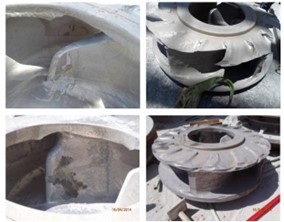
That last point provided a neat segway into the next discussion point: inspections. “During the mission run of the pump, inspections provide important information to help diagnose problems that may be experienced later,” said Perry. “Oftentimes, the parts are not observed until very late in the run, when wear has accelerated to the point that diagnosis of the root cause becomes difficult. Any mid-cycle inspections can provide clues to how wear starts, before becoming severe enough to require a shutdown, and may lead to solutions that can delay or prevent the onset of this wear.”
Slurry pump wear is often a “non-linear function,” added Weir Minerals’ Quinton Sutherland. “It is thus important to take consistent measurements during shutdowns to create a trend history of wear rates and the resulting predicted wear life. Even if maintenance intervals are driven by another piece of equipment in the process (e.g. the SAG mill), instead of running the slurry pump to failure, understanding wear trends can allow an operator to estimate how long their pumps will last, giving them peace of mind between shutdowns.”
“When inspecting a pump’s wet-end, start by checking which of the three mechanisms is creating wear,” said Metso pump services expert, Tiago Oliveira, who guided us through the inspection process. “The side liners should then be inspected to understand the wear pattern between the impeller and liners, which is one indication of whether the pump is operating at BEP. Other indications of off-BEP operation can be gleaned by inspecting the casing volute and the location of the sliding bed and low angular abrasion patterns, as well as the impeller, looking for the wear pattern on the eye and on the vane tips, which can also indicate sizing limitations.”
The importance of inspections and preventative maintenance “holds especially true for unlined pumps, where the casing has dual the functions of containing both pressure and wear,” added Bessett of FLS. “It is important to dispel the misconception that only lined pumps are safe, as unlined pumps can be perfectly safe when regular thickness measurements are recorded and tracked. Additionally, unlined pumps have a much smaller footprint, have fewer components, and are much easier to maintain.”
Digital solutions are also providing new avenues when it comes to monitoring slurry pumps over time. These technologies essentially enable “pump manufacturers and equipment operators to gather key operating and performance data much earlier in the process, and with much greater clarity and frequency than before,” said KSB’s Perry.
“By continuously monitoring the health of the equipment, it becomes possible to diagnose problems earlier and improve the outcomes in near real time,” the KSB engineer continued.
“In addition, digital condition monitoring provides new data streams that help build a more complete picture of how the equipment performs and responds to changes in operating and design parameters. Armed with this information, it is possible to unlock previously hidden efficiencies in the operation and maintenance of the equipment, reducing costs, downtime, and uncertainty.”
Selecting a pump supplier
When it comes to selecting a pump supplier, the “most important factor is trust,” began Perry. “Trust in the reliability of the product, reliability of the supply chain, and reliability in the technical expertise of the equipment provider. There are many challenges when operating a slurry pump, many of which can be foreseen, but some of which cannot. In times of need, it is always best to have a trusted partner who has seen it before and can help identify timely and effective solutions.”
When selecting a slurry pump provider, “a mine should consider the level of innovation and technical support available to improve the total cost of ownership over the pump lifecycle,” according to Metso’s Oliveira. “Then it is important to have a supplier in full control of the supply chain, manufacturing its own parts and building its own pumps with genuine parts. It is also important to ensure that such genuine OEM parts comply with strict quality and performance standards; this ensures efficient operations leading to reduced power consumption and unexpected shutdowns and production losses. Finally, it is important to have a global supply chain and inventory stock available to supply the right parts in a timely manner, combined with knowledgeable field services teams and repair center capabilities close to the installed base.”
“Availability of spare parts is critical to successful pump operation, as well as the presence of service and rebuild centers located close to your mine site. This cuts lead times and ensures your pump is only ever down for as short a time as possible – or ideally not at all,” echoed Nicole Bessett of FLS. “A key part of this is how the OEM integrates data from sales, inventory, and production department to allow it to stay up to date with stock levels and customer demand.”
Selecting a slurry pump provider that “understands the unique needs of each customer is critical,” added Weir Minerals’ Sutherland. “For example, some customers prioritize uptime above all else. They may be willing to pay a premium for the most advanced materials available, since their downtime costs are orders of magnitude higher than the premium parts prices, especially if they do not have a standby pump available. On the other hand, some customers have standby pumps installed and run their pumps to complete failure in a stable process, so they may require a more standard material selection. These are examples of how an OEM combines both the unique operating needs of a customer with the optimization of their total cost of ownership (TCO).”
“One piece of advice is to view the operator-supplier relationship as a partnership,” concluded Sutherland, bringing the discussion full circle and back to trust. “The trust between both sides allows for open communication on the wear life history, operating data, and future wear targets. This allows the OEM to work efficiently to offer solutions that help the operator meet their desired goals.”
